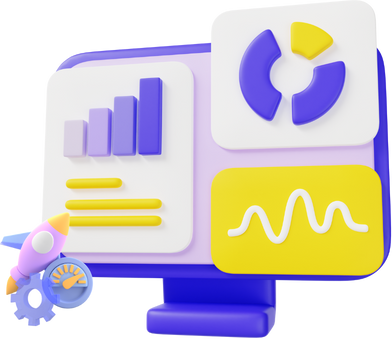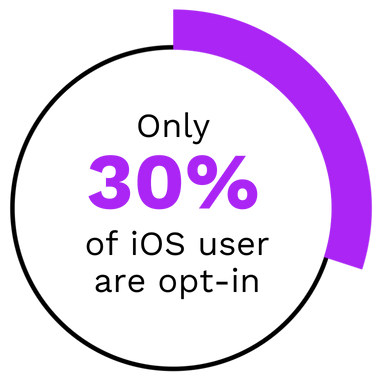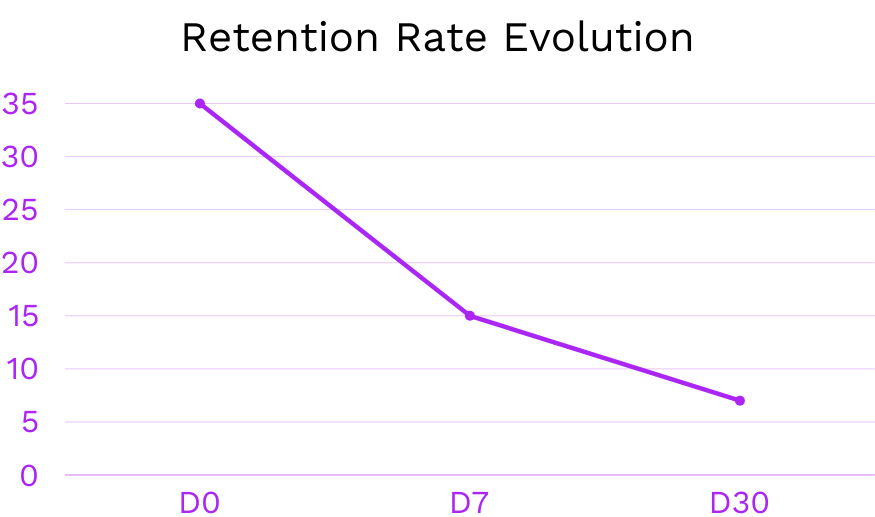Mobile attribution: 6 key steps to track and attribute your performance
Introduction
Attribution is a key concept in mobile marketing. It enables app marketers to determine the origin of app downloads and user actions. Unlike web attribution, mobile attribution is far more complex due to the nature of mobile ecosystems and technical constraints. This guide explores everything you need to know about mobile attribution: definition, differences with the web, challenges, affiliation in User Acquisition (UA) and best practices.

What is mobile attribution?
Mobile attribution involves identifying the origin of user interactions leading to specific actions, such as a download, registration or in-app purchase.
To measure these actions, we work with various third-party attribution tools (such as Adjust, AppsFlyer, Kochava, or Branch) that enable marketers to link advertising campaigns to measurable results.
Here are a few concrete examples
- Facebook Ads campaigns: thanks to this type of tool, we can determine that 1,000 installations of an application come from a Facebook campaign targeting users aged 18 to 24.
- Interstitial ads in a mobile game: we can also measure that 300 clicks on these ads led to 50 installations, with an average cost per installation (CPI) of €2.
Attribution thus enables advertising platforms to be remunerated according to their contribution to UA campaign results. juste des plateformes publicitaires selon leur contribution aux résultats des campagnes UA.
What’s the difference between mobile and web attribution?
While web and mobile attribution have the same objective, namely, to reconcile results and advertising campaigns, their mechanisms differ for several reasons:
1. Closed ecosystem of mobile platforms
On mobiles, the Apple (iOS) and Google (Android) ecosystems impose technical limitations that don’t exist on the web.[FH1]
Indeed, on mobile platforms, the Apple (iOS) and Google (Android) ecosystems enforce specific technical limitations and guidelines that differ significantly from the web. These constraints can include restrictions on app functionality, data collection, privacy settings, and integration capabilities. For example, iOS imposes strict rules on app tracking transparency (ATT) and data usage, while Android has its own set of policies around permissions and the use of external APIs. These ecosystem-specific requirements often necessitate tailored development strategies to ensure compliance and optimize app performance, presenting unique challenges and opportunities for mobile app developers.
2. Use of the advertising identifier (IDFA/GAID)
Mobile attribution relies on device-specific advertising identifiers (IDFA on iOS, GAID on Android), which are subject to strict privacy rules. For example, iOS 14.5, which introduced App Tracking Transparency (ATT), has had a considerable impact on privacy and therefore tracking, since it requires explicit consent from users before collecting their identifier.
3. Multi-application environments
Unlike the web, where the user often navigates in a single browser, mobile interactions involve numerous applications, making user tracking more complex.
Example: A campaign on Instagram links to a store (App Store or Google Play), then to an applicationà Each action takes place on a different application, making tracking more complex.
What are the main challenges facing mobile attribution?
Attribution on mobile is more complex than on the web, so marketers face a few challenges, including:
1. Data loss due to confidentiality

Privacy standards are becoming increasingly restrictive. With the introduction of regulations such as the GDPR and updates such as iOS 14.5, user tracking has therefore become limited, considerably reducing the volume of data available for attribution. Indeed, less than 30% of iOS users consent to tracking via ATT, making it difficult to analyze their actions
2. Mobile Advertising Fraud
Mobile is fertile ground for fraudsters, with practices such as click spamming (over-representation of clicks) and SDK spoofing (simulation of conversions). By 2022, ad fraud is estimated to have cost the industry nearly $65 billion.
3. Multi-touch Attribution
On mobile, it’s difficult to attribute actions to multiple advertising touchpoints. By default, tools often favor a last-click model, which doesn’t always reflect reality. Attribution models are increasingly probabilistic, covering a defined period of time.
4. Channel complexity
Campaigns often involve multiple platforms (social ads, DSPs, affiliate campaigns), which complicates the correct attribution of each contribution.

What steps should you take to ensure campaign attribution?
Step 1: Choose a reliable attribution solution
The first step to successful mobile attribution is to use an attribution tool. Each tool has its own specificities, and it’s crucial to choose your MMP according to your objectives.
- AppsFlyer: Ideal for multi-touch tracking and detailed analysis.
- Adjust: Renowned for its advanced anti-fraud features.
- Kochava: Flexible and adapted to complex campaigns.
- Branch: Focused on attribution based on deep linking.
These solutions work by collecting data via advertising identifiers (IDFA for iOS, GAID for Android) or identifier-less solutions, such as fingerprinting.
Step 2: Setting up campaigns with tracking links
Attribution tools use tracking links to associate each click or impression with a specific campaign.
Tip: it’s important to integrate these links into all your campaigns, whether on social networks, DSPs or affiliate campaigns.
Step 3: Integrate the attribution tool into your application
To track post-installation events (registration, purchase, etc.), it is essential to integrate an SDK (software development kit) for the attribution tool into your application.
Here are a few examples of events to follow:
- Registration: The number of users creating an account after installing the application.
- First in-app purchase: Direct conversions generated by a campaign.
- Engagement : Actions such as watching a video or reaching a level in a game.
Step 4: Measure campaign performance
To accurately measure the impact of your actions, track these key KPIs:
Cost per Installation (CPI): The average cost of acquiring a user who installs the application.
Conversion rate: Percentage of users who have carried out a post-installation action, such as purchase or registration.
Lifetime value (LTV): Total revenue generated by a user throughout his/her life cycle in the application.
- Tip: Segment users by channel to find out which provide the best LTV.
Return on Investment (ROI): Compares the revenues generated by an advertising channel with the associated expenses.
Retention rate: Measures how many users continue to use the application after a certain period of time (Day 1, Day 7, Day 30).

Step 5: Adopt advanced attribution models
Attribution models determine how you give credit for conversions to different advertising touchpoints.
Modèles courants :
- Last-click: Conversion is attributed to the last click before the action.
- Avantage : Simple à mettre en place.
- Limite : Néglige les interactions précédentes.
- First-click: Credit goes to the first point of contact.
- Advantage: Useful for awareness campaigns.
- Limitation: Neglects intermediate actions.
- Multi-touch: Distributes value across multiple touch points.
- Example: A multi-touch campaign might attribute 40% of the conversion to the first click, 20% to intermediate clicks, and 40% to the last click.
- Probabilistic model: Attribution method using statistical calculations to estimate the contribution of advertising campaigns, ideal in environments where user data is limited.
- Deterministic model: Approach based on direct evidence such as unique identifiers or clicks, guaranteeing accurate attribution in contexts where such data is available.
Step 6: Ongoing campaign optimization
Effective mobile attribution isn’t static. Analyze data regularly to adjust your strategies.
Concrete actions :
- Reallocate budget: Invest more in channels that deliver higher ROI.
- Test creatives: Test several visuals or videos to identify the ones that convert best.
- Automate processes: Use artificial intelligence tools to optimize your campaigns in real time.

Do not hesitate to contact with our teams
Addict can support you to improve your performance.
Conclusion
Mobile attribution is essential for optimizing User Acquisition campaigns and understanding the effectiveness of advertising investments. Despite challenges related to privacy, fraud and the complexity of mobile ecosystems, marketers can overcome these obstacles by applying best practices, relying on high-performance attribution tools and adopting a proactive approach to analysis and optimization.
At Addict Mobile, we’ll set up your tracking system to ensure optimal monitoring of campaign performance. Get started now!


